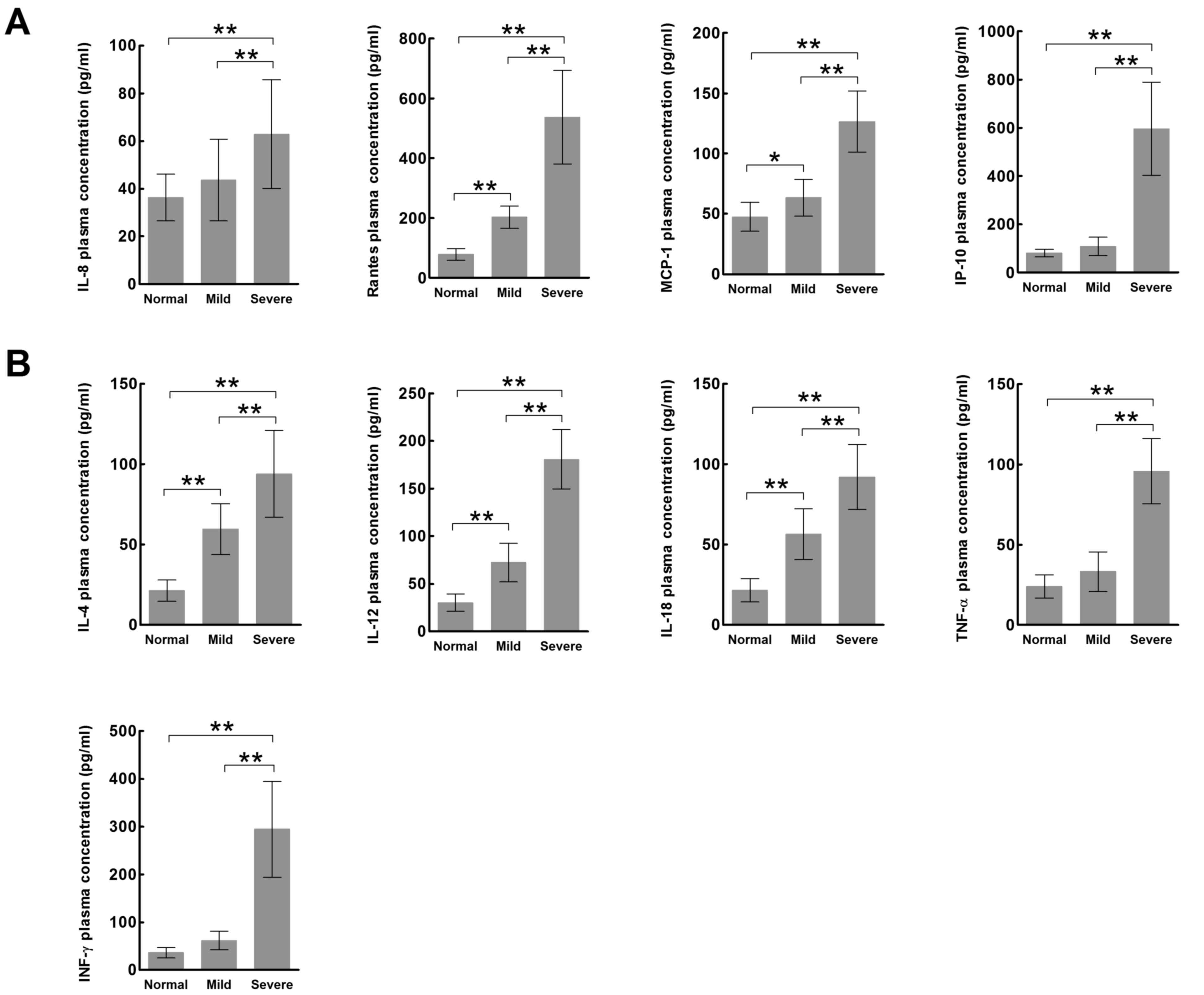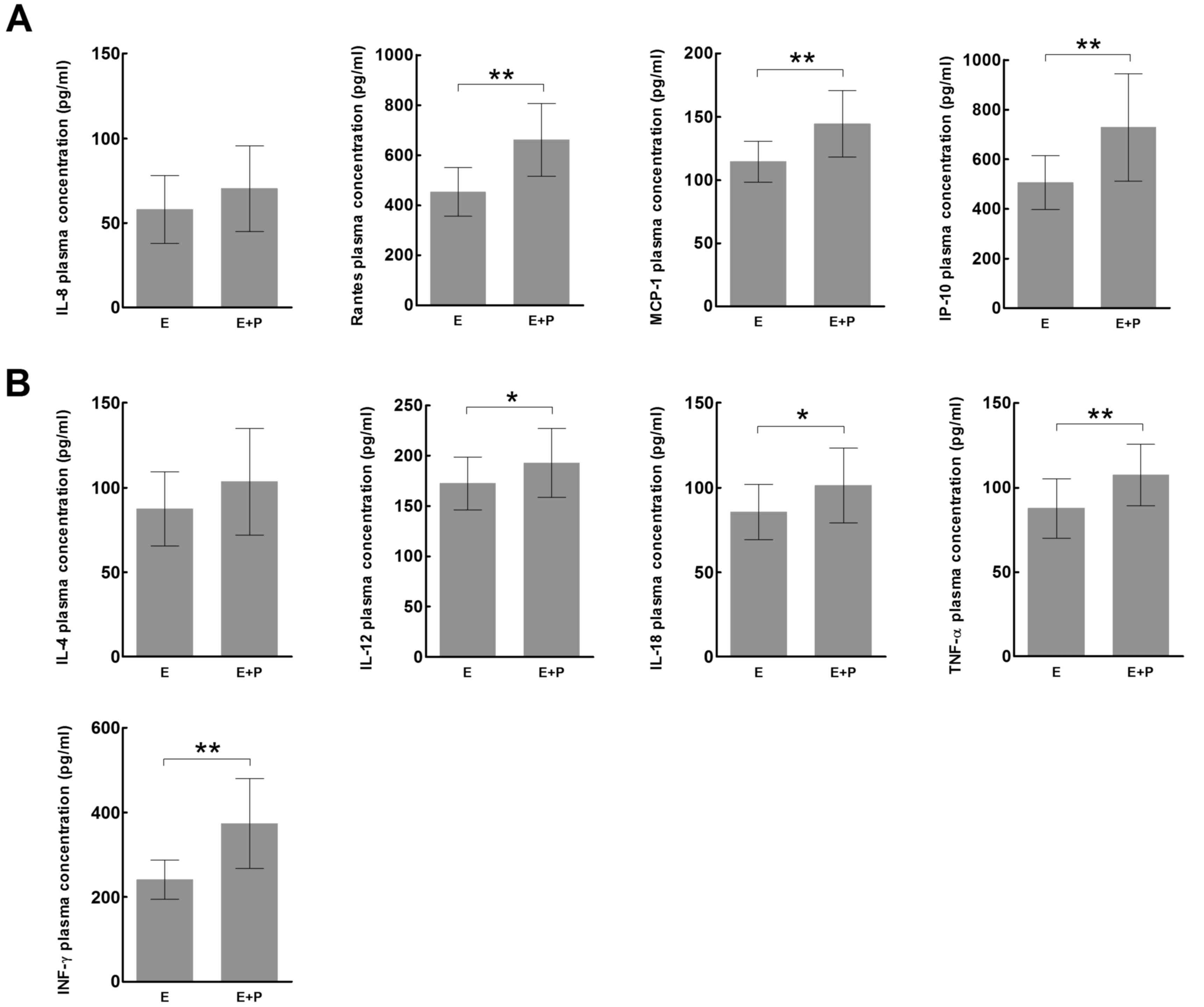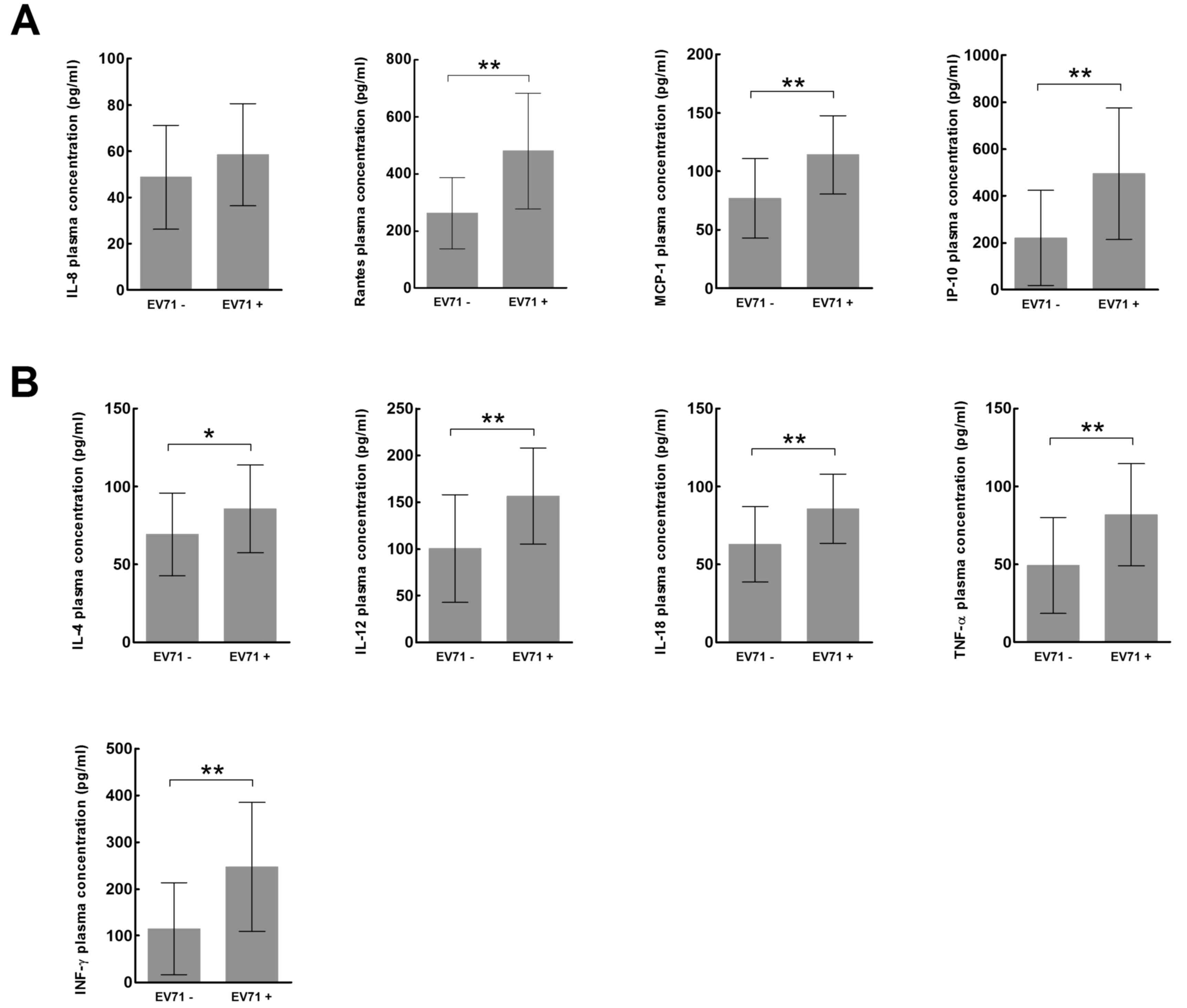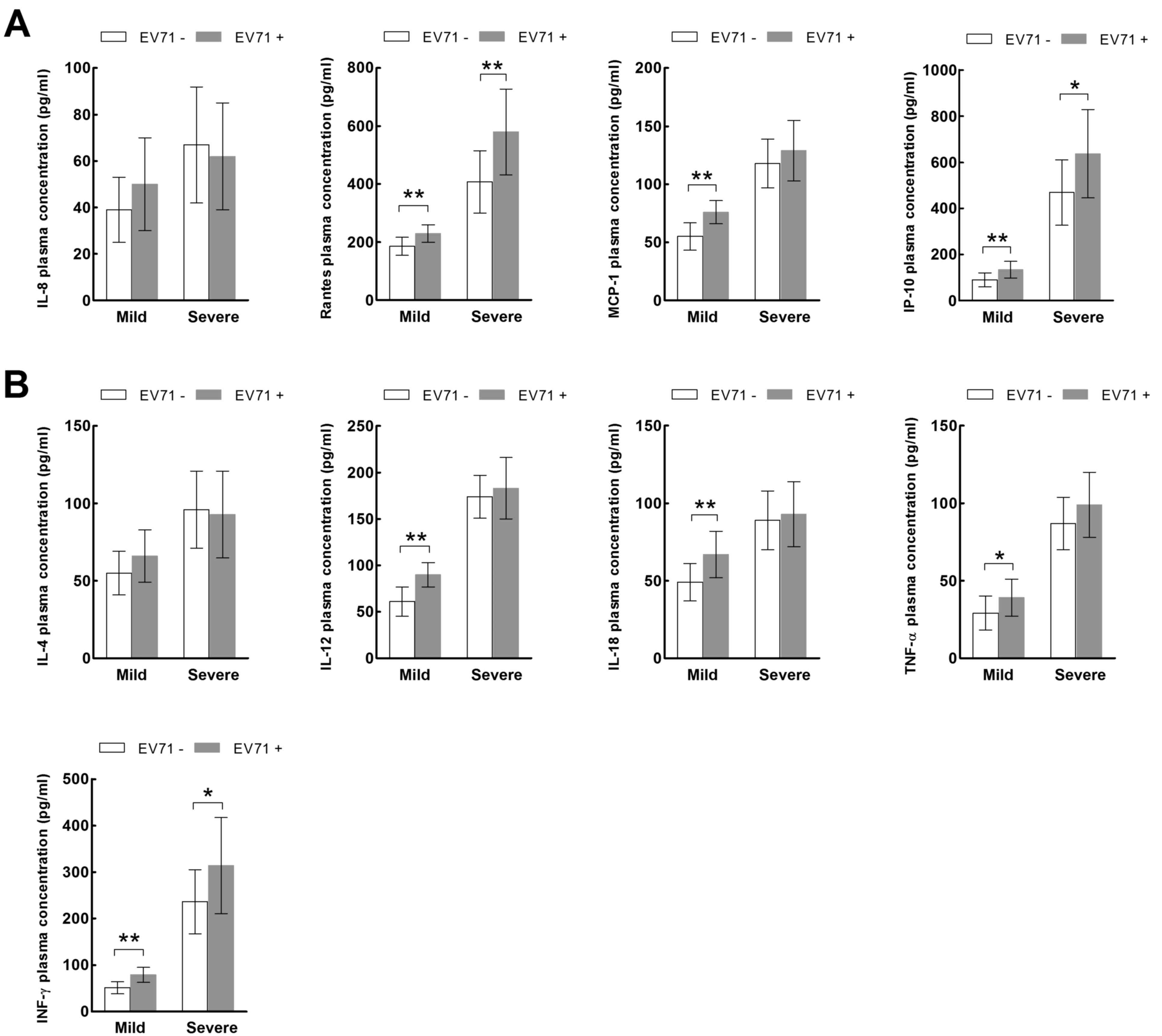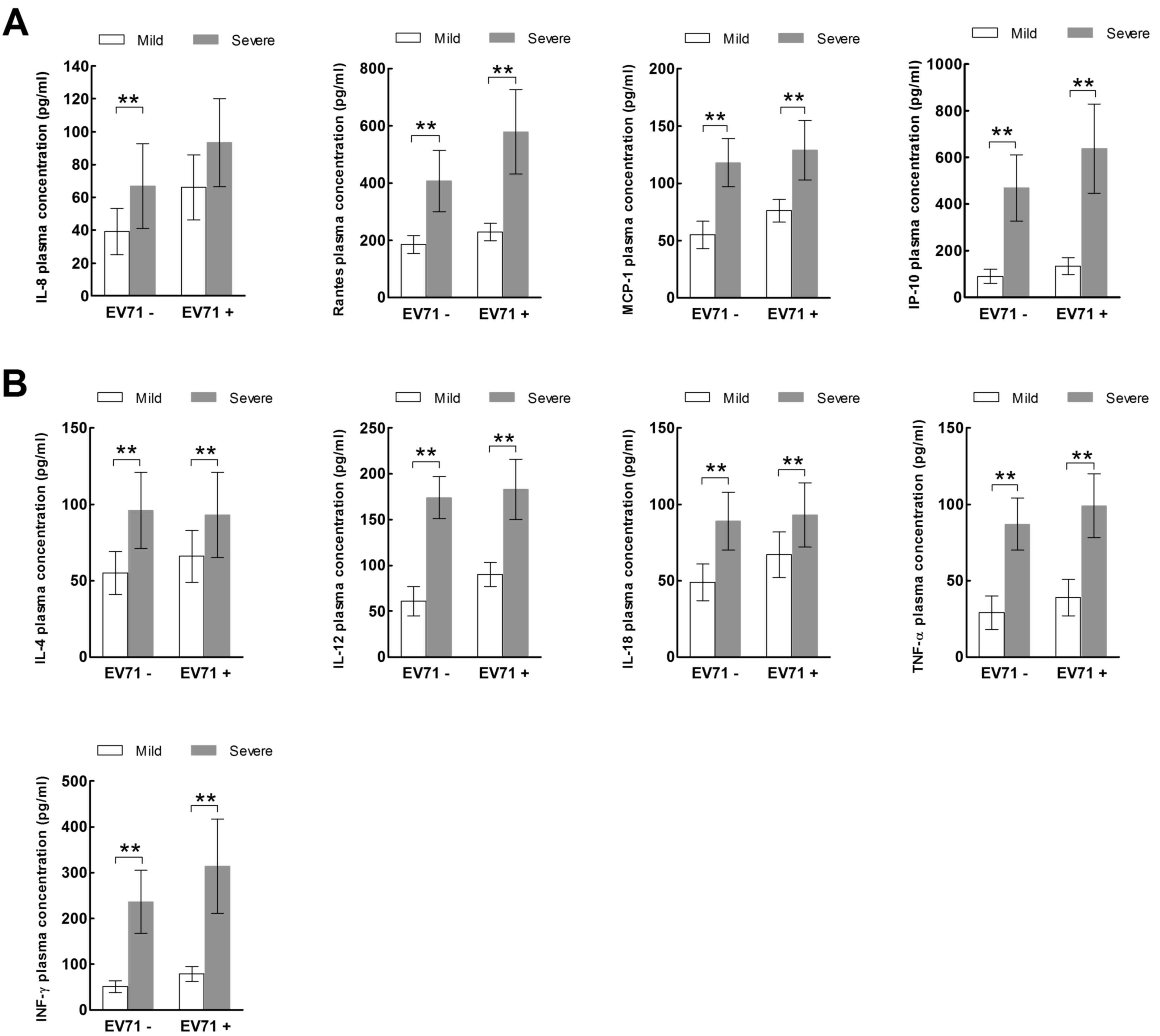Clinical significance of inflammatory cytokine and chemokine expression in hand, foot and mouth disease
- Authors:
- Published online on: March 15, 2017 https://doi.org/10.3892/mmr.2017.6324
- Pages: 2859-2866
Metrics: Total
Views: 0 (Spandidos Publications: | PMC Statistics: )
Total PDF Downloads: 0 (Spandidos Publications: | PMC Statistics: )
Abstract
The present study examined the relationship between cytokine and chemokine expression and the clinical presentation of hand, foot and mouth disease (HFMD), which is currently unclear. The present study involved 28 patients with mild HFMD, 44 patients with severe HFMD and 26 healthy children. Venous blood was tested for cytokine [interleukin (IL)‑4, IL‑12, IL‑18, tumor necrosis factor‑α (TNF‑α), interferon‑γ (IFN‑γ)] and chemokine expression [IL‑8, regulated on activation, normal T cell expressed and secreted (RANTES), monocyte chemoattractant protein‑1 (MCP‑1) and IFN-γ-inducible protein‑10 (IP‑10)]. Stool samples from the patients were tested for enterovirus 71 (EV71) RNA using reverse transcription-polymerase chain reaction. The results indicated that all cytokine/chemokine levels were increased in patients with severe HFMD compared with in patients with mild HFMD or control subjects. In addition, RANTES, MCP‑1, IL‑4, IL‑12 and IL‑18 levels were higher in mild HFMD patients than in the controls. In patients with severe HFMD, all expression levels (with the exception of IL‑8 and IL‑4) were increased in patients with encephalitis plus pulmonary edema compared with those with encephalitis alone. Furthermore, all levels (with the exception of IL‑8) were increased in EV71‑positive patients compared with EV71‑negative patients. In mild HFMD, all levels (with the exception of IL‑8 and IL‑4) were increased in EV71‑positive patients compared with EV71‑negative patients. However, in severe HFMD, only RANTES, IP‑10 and IFN‑γ levels were increased in EV71‑positive patients compared with EV71‑negative patients. In the EV71‑negative group, all levels were increased in severe HFMD compared with mild HFMD. In the EV71‑positive group, all levels (with the exception of IL‑8) were increased in severe HFMD compared with mild HFMD. These results indicated that cytokines and chemokines participate in HFMD pathogenesis, and may be useful to monitor disease progression and predict prognosis.



